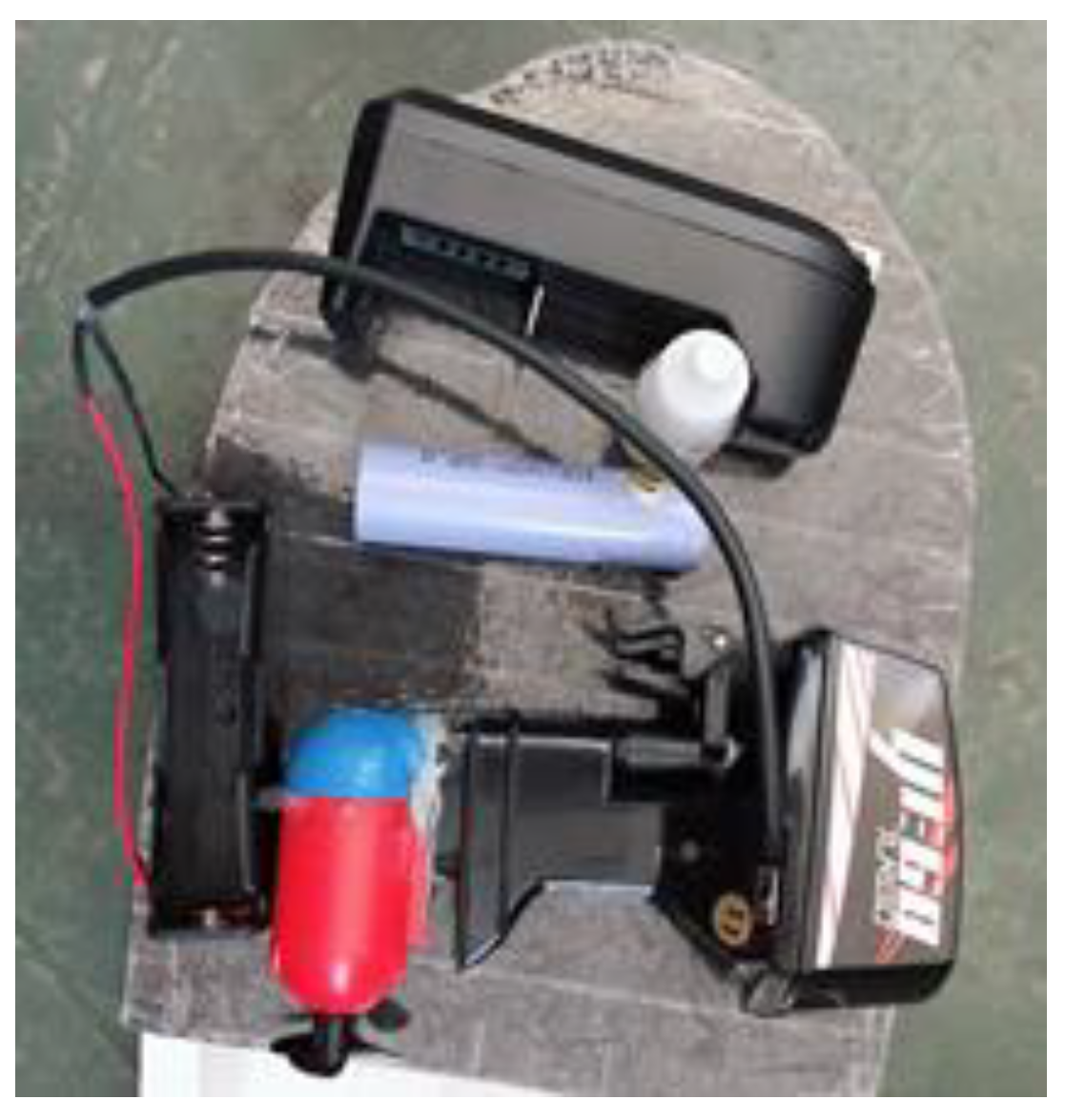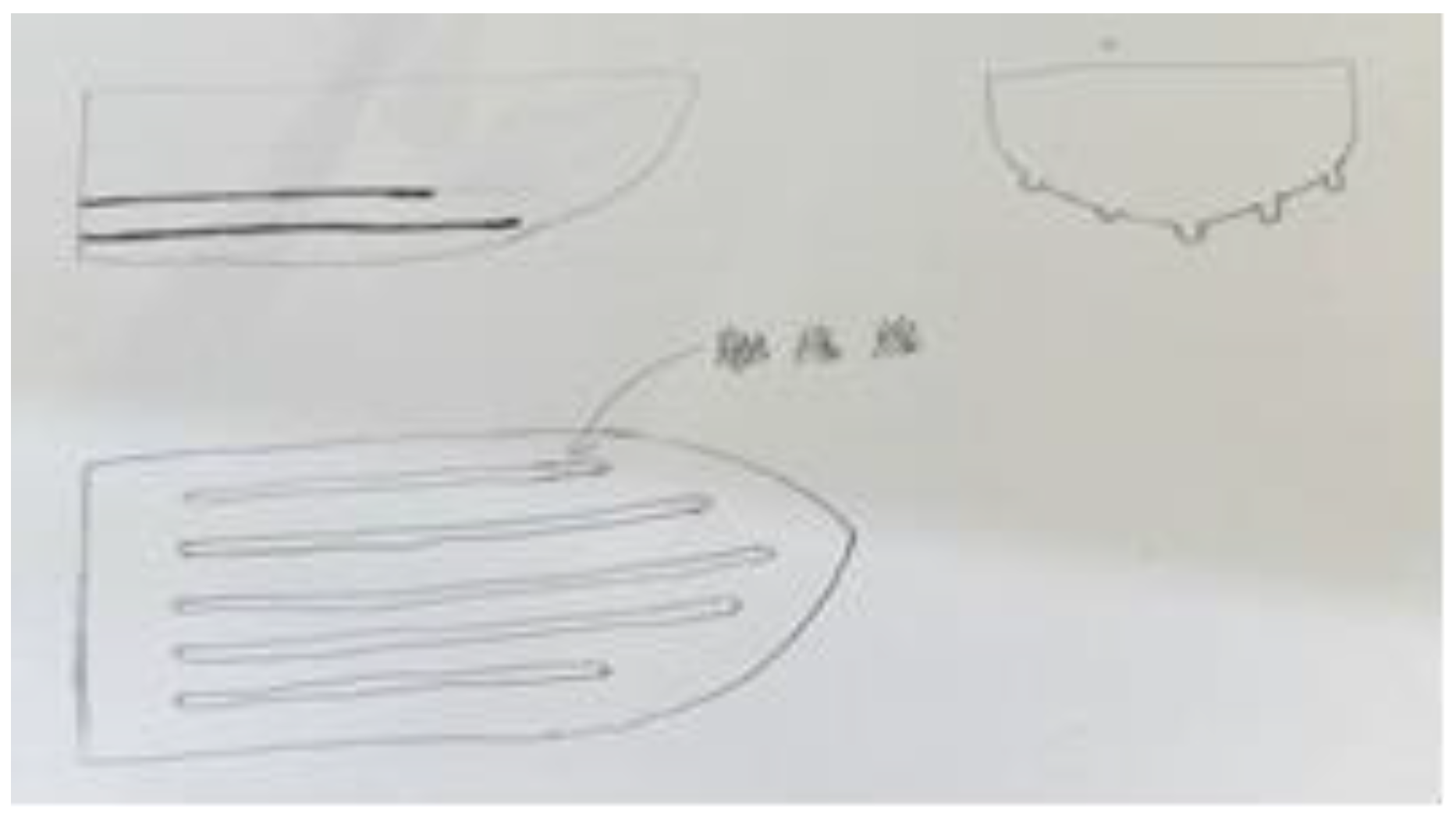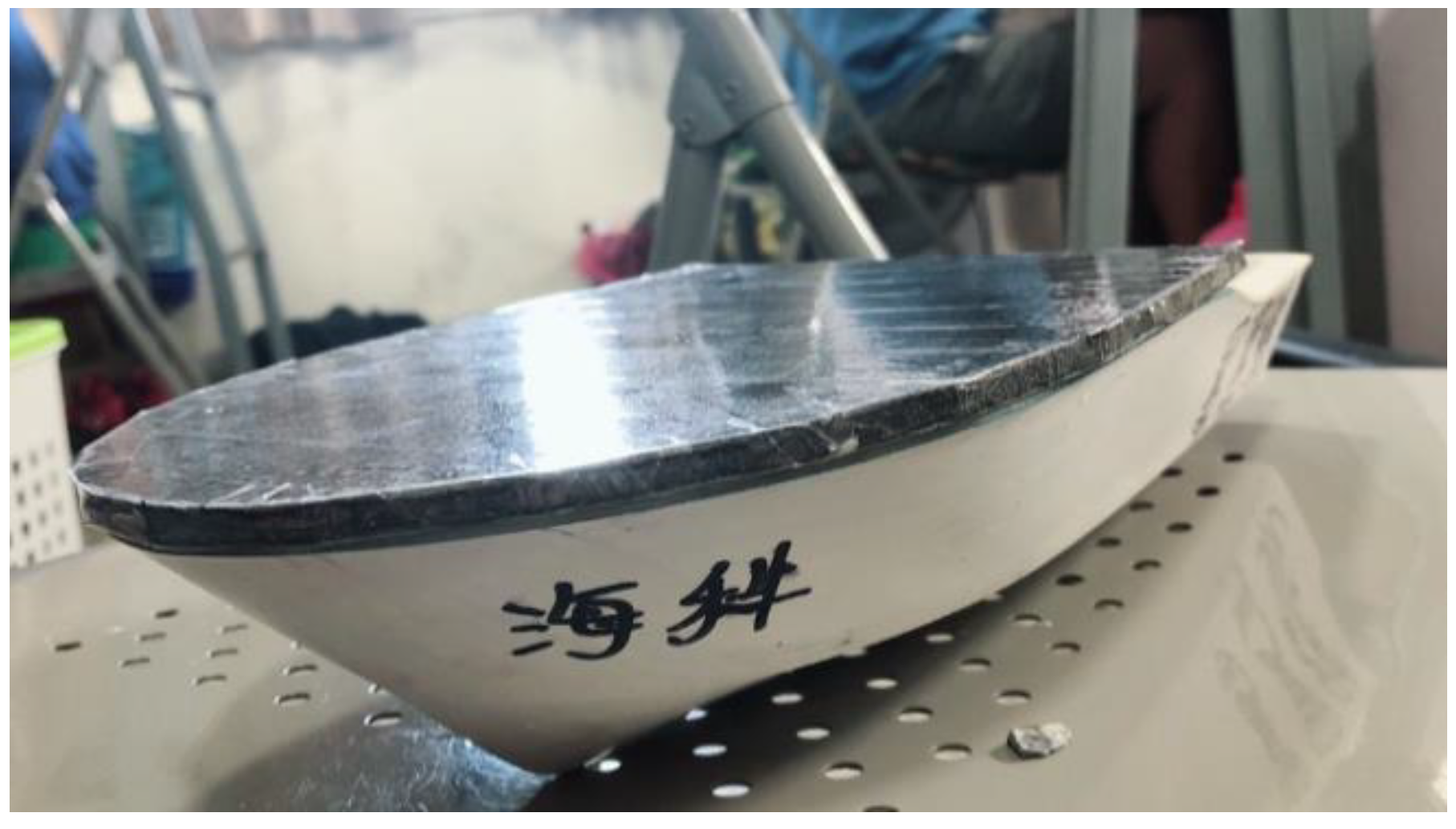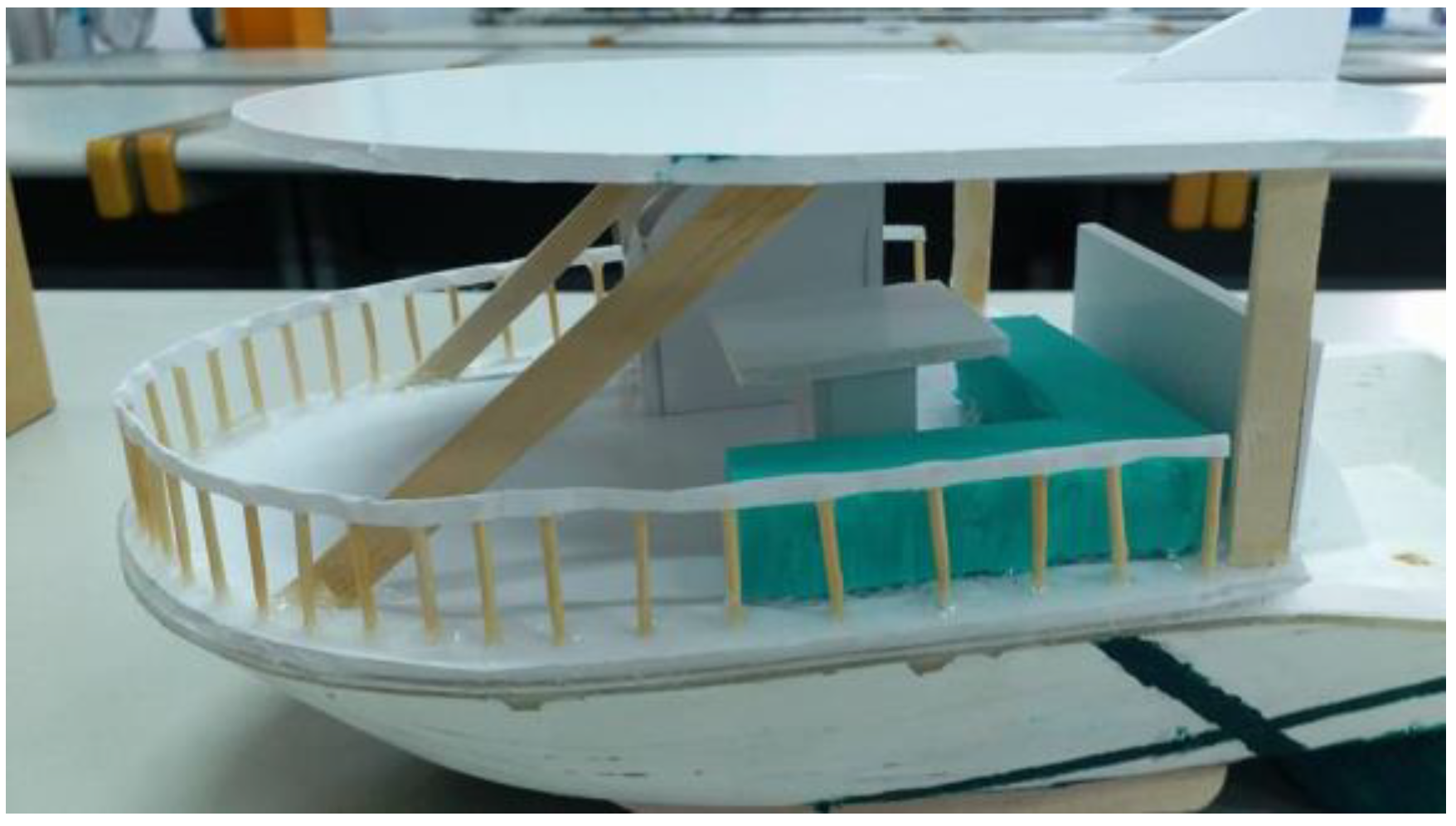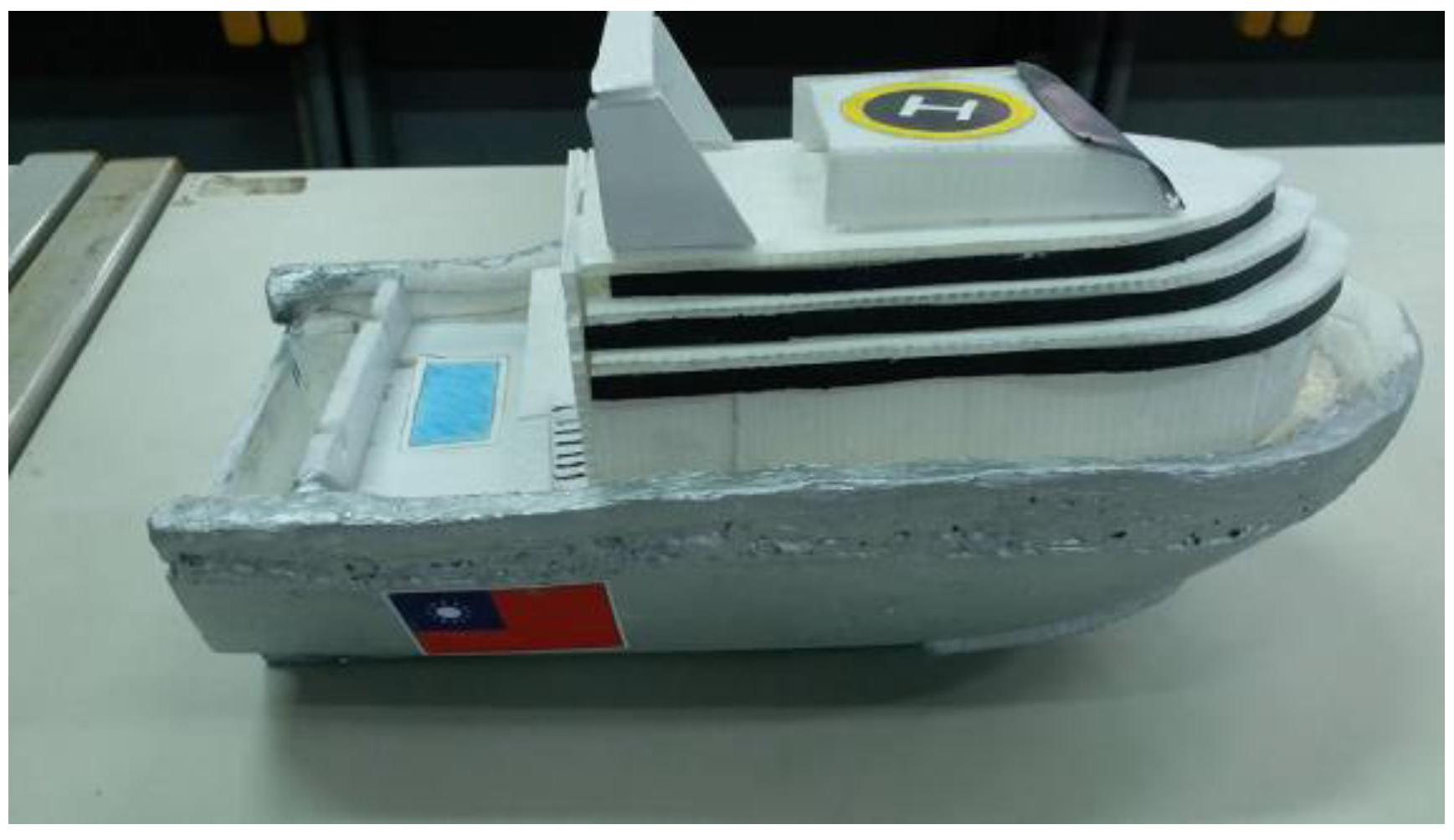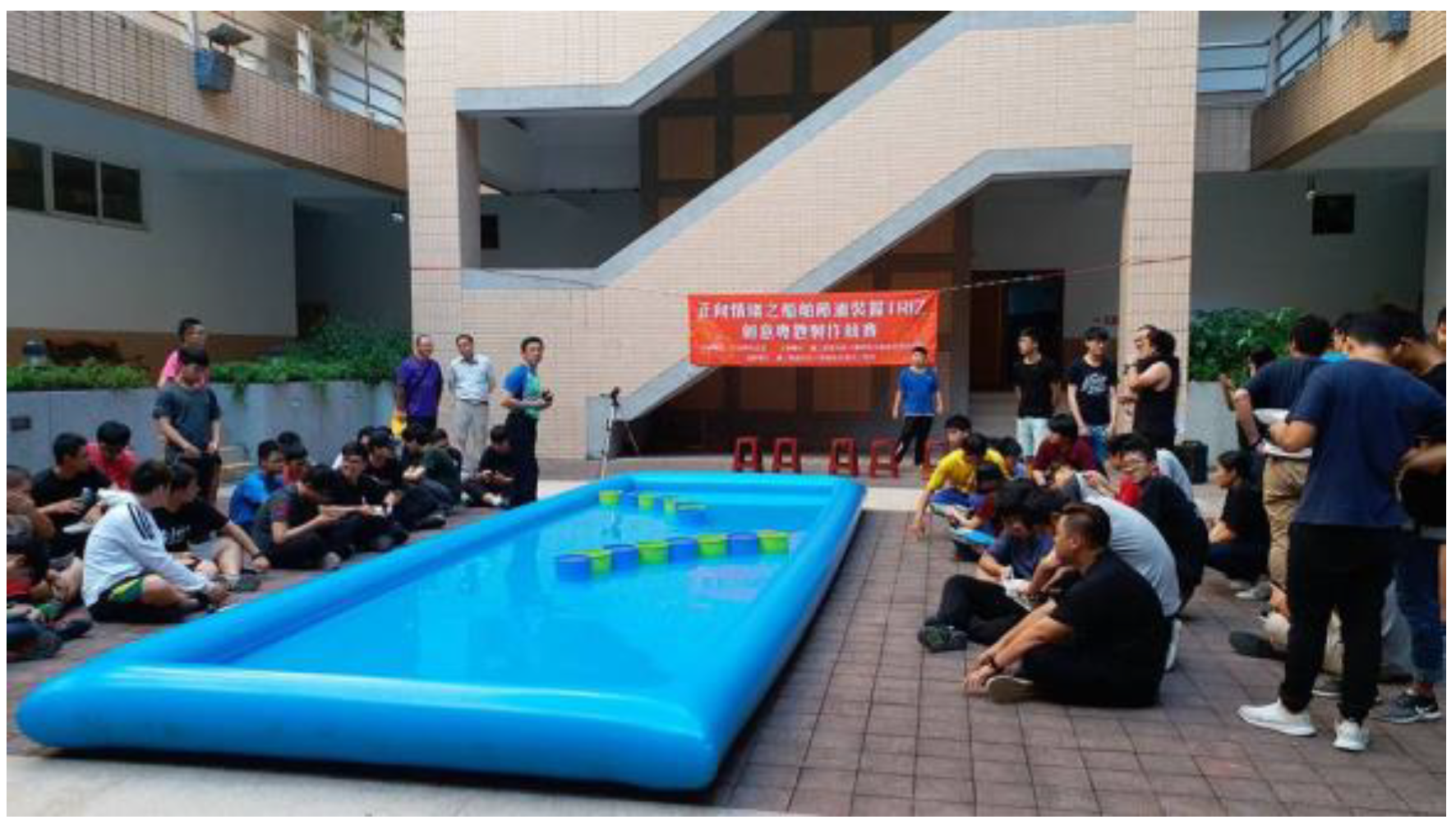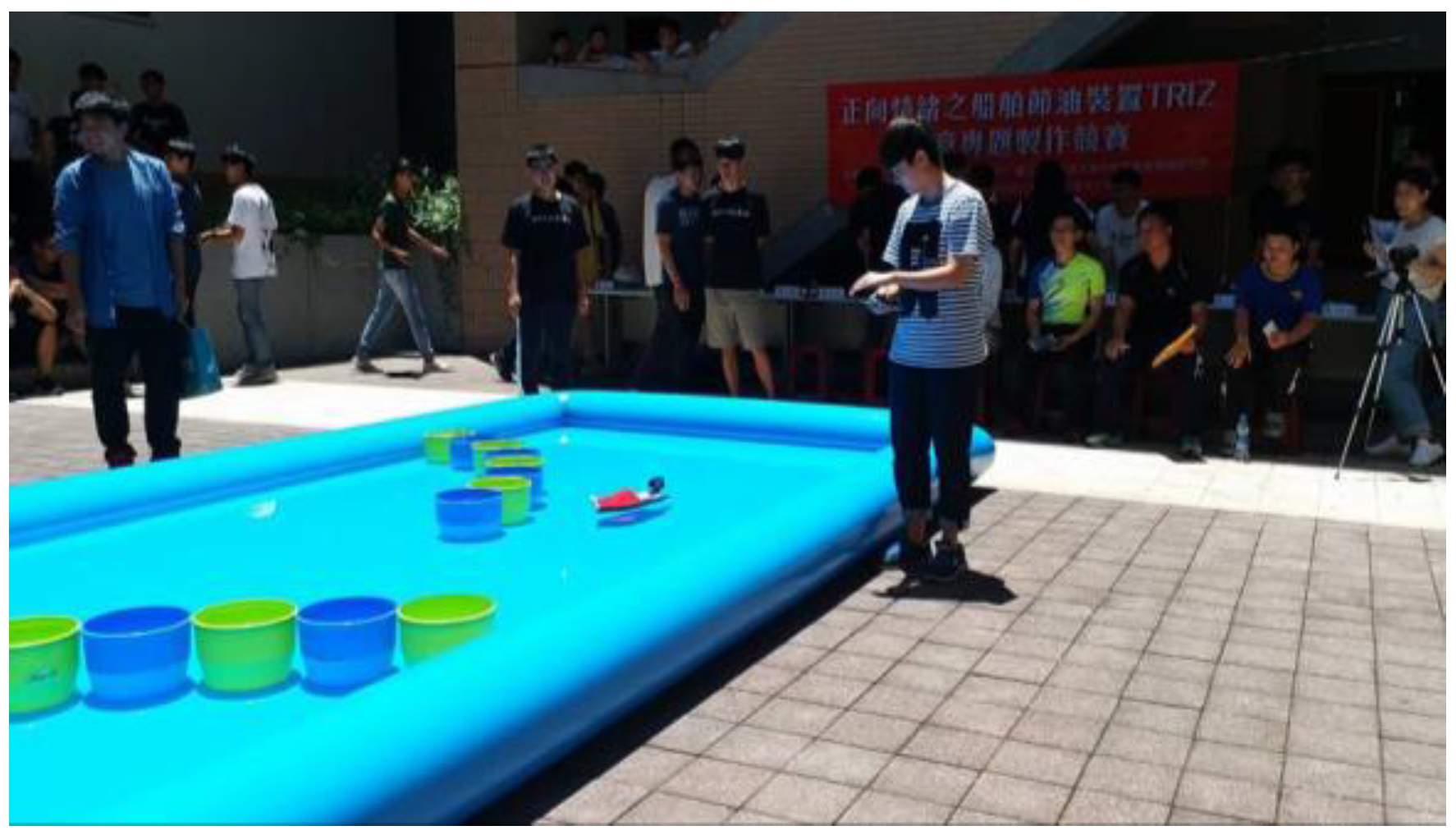This study observed and collected feedback on the students’ learning process in the “Positive AI 2 Fuel-Saving Project”, such as student group discussions on the Push-pull Mobile Learning platform, classroom performance, project reports, experience sharing, or other related text data. This study adopted content analysis (textual analysis), and based on previous literature, according to the content analysis of the positive emotions literacy in
Table 3, collected, explored and generalized keywords of joy, contentment, confidence and optimism to study students’ performance in positive emotions literacy. The project steps are described as follows.
4.3.1. Students’ Learning Process
(1) Classroom Learning Course—Providing Students with Clear Course Objectives and Teaching Contents
This study guided students in implementing curriculum teaching, energy consumption reduction education, positive emotions, and other knowledge according to the “Positive AI 2 Fuel-Saving Project”, and it integrated positive emotion elements into the curriculum and project design. The teachers were required to adopt positive emotion teaching guidance methods, such as joy, contentment, confidence, and optimism, among others, in the classroom to enable students to assimilate happy, confident, and optimistic learning attitudes and to be willing to spend time learning and participating in the activity. “S2-3: Greater learning about positive emotions is needed, and we should face various task challenges with a positive attitude.” Students used the Internet to collect knowledge, technology, and equipment related to reduce energy consumption as the basic knowledge of creative design. “S1-4: Through collecting data, we know that the speed of a boat is usually expressed in terms of “knots”, where one knot is equal to the speed of 1 nautical mile per hour, and 1 nautical mile is equal to 1852 meters, that is, the speed of “one knot” is approximately 0.5144 meters per second. Such information is also used in engine and internal combustion engines used in ships.
(2) Push-pull Mobile Learning Course—Providing Students with Diversified Experience Learning, Discussion and Exchange
This project developed the Push-pull Mobile Learning courses to enable teachers and teaching assistants to interact with students and provide advice and assistance. We also encouraged the student groups to make greater use of this platform to conduct group discussions, sharing, and cooperation in learning. “S5-2: We participate in team work to complete projects, interact via discussions, share opinions, and consult with teachers or teaching assistants when problems arise. Their help can provide lot of inspiration.” Students had a basic understanding of positive emotions after the Push-pull Mobile Learning platform’s positive emotions courses and tests: “S4-2: We can think about the questions with our classmates and discuss them with each other, and we feel happy and pleased.”, “S7-1: We should maintain our enthusiasm and interest, and continue to think about creation, even if we encounter difficulties during the process.”
(3) App Inventor 2 Ship Fuel-Saving Project Production—Providing Students with an Authentic Question—Oriented Learning Situation and Emphasizing the Practice of Learning by Doing
The production of this project was divided into five stages: preparation, design, production, finished products, and publication, which are described as follows.
● Preparation Phase
First, the students were taught how to use ship models, and they learned how to make ship hulls, as shown in
Figure 2 and
Figure 3. Furthermore, students were provided with basic control unit materials, as shown in
Figure 4, including ship hull power, a battery holder, a rechargeable battery, a battery charger, and an oil jug, among others, to assemble and install them. Concurrently, students were taught how to design, develop, and modify the parameters of the APP program for hull power plant end control, as shown in
Figure 5, to test the launching of motors and ship models and to simulate the situation of ships traveling on water, as shown in
Figure 6 and
Figure 7. “S2-4: It is the first time I learned how to develop APP applications. I felt very excited and challenged.” Students began to discuss and think about the future design direction of the team. When the design theme was determined, they began to think about the relevant materials used. “S4-3: The materials prepared by our group, as shown in
Figure 8, include model plates (reducing wind resistance), dry glue, Styrofoam blocks (increasing buoyancy), adhesive tape, double-sided tape (fixing battery holder), etc.”
● Design Phase
According to the direction of the group discussion, the oil-saving design of the ship was drawn, as shown in
Figure 9, and its energy consumption reduction design principle was explained; for example, using a bulbous bow to improve water-breaking, the addition of deflectors to increase aerodynamics, the addition of side panels to the bottom of the ship for water breaking. “S5-1: We want to add a bulbous bow at the bottom of the ship to increase the water-breaking function and increase the necessary edge line of the ship to improve the drainage, as shown in
Figure 10, as well as add a guide plate around the ship to reduce wind resistance as a breaking wind.”
● Production Phase
Students generated solid objects according to the design drawings and materials, as shown in
Figure 11 and
Figure 12. When they encountered problems during the process, they immediately found ways to solve them. “S4-3: We think about adopting the method of filling soil to form the bulbous bow and the necessary edge of the boat.” “S3-4: We wanted to use carbon fiber products to make the ship’s deflector, inducer, and board above the driver’s seat, as shown in
Figure 13, but we finally used acrylic due to the financial pressure”. After completing production, the ship’s functional underwater navigation test was started. “S1-3: When the ship was launched, it was found that installing a motor behind the ship would lead to a serious draught in the rear half of the ship, and the water resistance would be very high. Therefore, we installed Styrofoam in the bottom of the ship and reduced the volume to reduce the water resistance.” “S3-2: We added wooden boards on our ship to reduce the wind pressure, as shown in
Figure 14, and we also installed a tail wing to balance the ship.”
● Finished Product Release Phase
This project required students to release finished products, as shown in
Figure 15 and
Figure 16, to share their design concept and production experience. “S2-4: After we installed the motor on the hull, we found that the stern draft was too deep. Water might enter when it hits an obstacle. Our solution was to increase buoyancy and prevent water inflow by placing Styrofoam on the bottom of the ship.” “S7-3: This group added Styrofoam reinforcement to the hull, which increases the front draft area of the hull and markedly affects the sailing speed of the ship. The solution was to design Styrofoam as a streamline shape to allow the water to flow more smoothly around the hull.” Through publication of the results, student groups can train their presentation skills, as shown in
Figure 17, understand the ideas and design concepts of other groups, and exchange with each other. “S9-1: We have benefited a lot from this group cooperation, and each person is growing up in terms of both discussion and technology due to the teacher’s guidance, as learning occurs not only in textbooks.” In addition, experts and scholars were invited to evaluate students’ briefing and creative work, as shown in
Figure 18, and they scored the ship energy consumption reduction design concept, navigation speed and operation, as shown in
Figure 19 and
Figure 20. Thus, they assessed students’ learning outcomes in terms of fuel-saving literacy and awarded excellent groups.
4.3.2. Positive Emotional Content Analysis Results and Discussion
This study used the Push-pull Mobile Learning platform as the context for students’ cooperative learning, as well as to collect learning interactive text data for the case students, including written reports, activity photos, records, and group works, among others, all of which were objects of analysis in this study. The results of the positive emotion content analysis are shown in
Table 7, and they are statistically explained according to each aspect and each group as follows.
(1) Performance of All Aspects of Positive Emotions
The performance results for the students in 11 experimental groups in the “Positive AI 2 Fuel-Saving Project” according to the four aspects of positive emotions are shown in
Figure 21, with the highest number being the confidence aspect (308 times), the second highest number being the joy aspect (204 times), the third highest number being the optimism aspect (195 times), and the lowest number being the contentment aspect (130 times). The results showed that most students could perform the projects with a confident attitude and happy mood, and they were optimistic about the results of the project.
(2) Performance of Each Group in Positive Emotions
Regarding the performance in positive emotions of the 11 experimental groups of students during the learning process of the “Positive AI 2 Fuel-Saving Project”, as shown in
Figure 22, the top 5 groups were Group 6 (122 times), Group 9 (102 times), Group 1 (90 times), Group 3 (84 times), and Group 2 (83 times). The correlation between the “group performance of positive emotions” and students’ “ship knowledge achievements” and “ship fuel-saving works” was further analyzed by product-moment correlation statistics.
In terms of the product-moment correlation statistical analysis of the “group performance of positive emotions” and “ship knowledge achievements”, as shown in
Table 8, the correlation coefficient was 0.599 (
p = 0.026), reaching a significant level, showing that students’ “group performance of positive emotions” was positively and highly correlated with “ship knowledge achievements”. In contrast, in the product-moment correlation statistical analysis of “group performance of positive emotions” and “achievement of ship fuel-saving works”, the correlation coefficient was 0.836 (
p = 0.001), reaching a significant level, indicating that students’ “group performance of positive emotions” was positively and highly correlated with “achievement of ship fuel-saving works”. Specifically, for most of the student groups, the higher the frequency of positive emotions and the greater the number of heated discussions, the better was their performance in “ship knowledge achievement” and “ship fuel-saving works achievement”, showing a high positive correlation. These results provide an important reference for follow-up course planning and the Push-pull Mobile Learning platform design.



